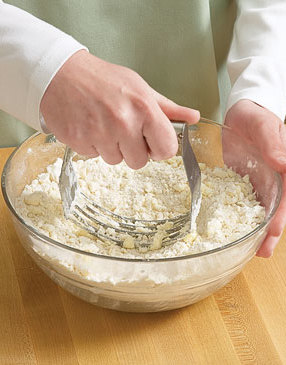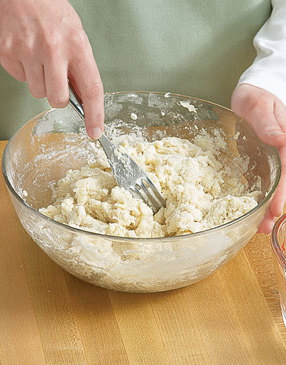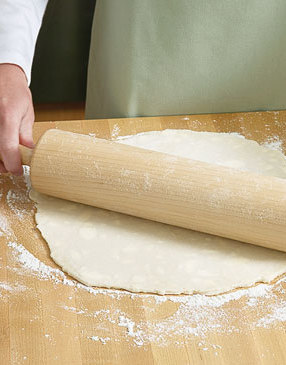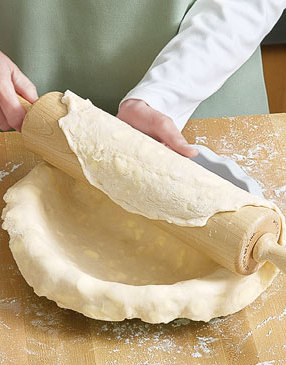
Desserts
Flaky Pie Dough
Nothing seems to trip up bakers — novices and old pros alike — more than pie dough. But with the recipe and tips offered here, you’re sure to pull it off. First, the choice of ingredients ensures it will be both flaky and tender (butter provides flakiness and shortening tenderness). When cutting these fats into the dry ingredients, do so just until pea-sized so the pieces will melt during baking, leaving flaky pockets in your dough.
To keep the dough tender, only mix it until it holds together when pressed between your fingers — overmixing makes pastry tough. Speaking of tender dough, vinegar is a secret weapon. The acid helps break down proteins formed in the flour.
Remember that pie dough is rather forgiving as long as you don’t stretch it, which causes shrinkage during baking. And don’t fret over rolling it out into a precise circle. Once the crust is baked, no one will be able to tell anyway. With all the other things to stress about this time of year, pie dough shouldn’t even make the list.
Ingredients
Test Kitchen Secrets
Cold ingredients make the flakiest pie dough. Start with cold butter and shortening and always use ice water.
Before rolling out the dough, chill it at least 1 hour (overnight is best). It will be easier to handle and less likely to be overworked during rolling. The dough can also be frozen — thaw it in the refrigerator before rolling it out.
Glass pie plates produce an evenly browned bottom crust. Use one if you can, especially for blind-baked crusts.
Instructions
Stir together flour, sugar, and salt. Using a pastry blender, cut in the butter and shortening until it’s the size of peas.
Combine water and vinegar, then add to flour-butter mixture, stirring with a fork until dough holds together. Form dough into a ball, divide in half, flatten each half into a disk, and wrap in plastic. Chill dough disks at least 1 hour.
Roll dough on a lightly floured surface into a 14-inch circle. Transfer dough to pie plate, pressing into bottom of plate with your thumb without stretching. Trim edges of dough to ½- to 1-inch overhang.

Pea-sized pieces of the fats will melt while baking, leaving pockets in the dough. This equals a flaky pie crust.

Stir the dough just until it holds together. If additional water is needed, add it 1 Tbsp. at a time.

Shift your rolling direction a quarter turn each time to create a 14-inch circle that’s an even thickness.

Transfer dough by wrapping it around a rolling pin, then unrolling it over the pie plate.